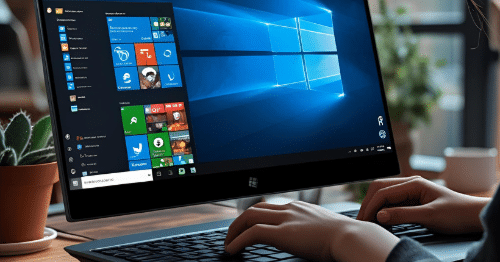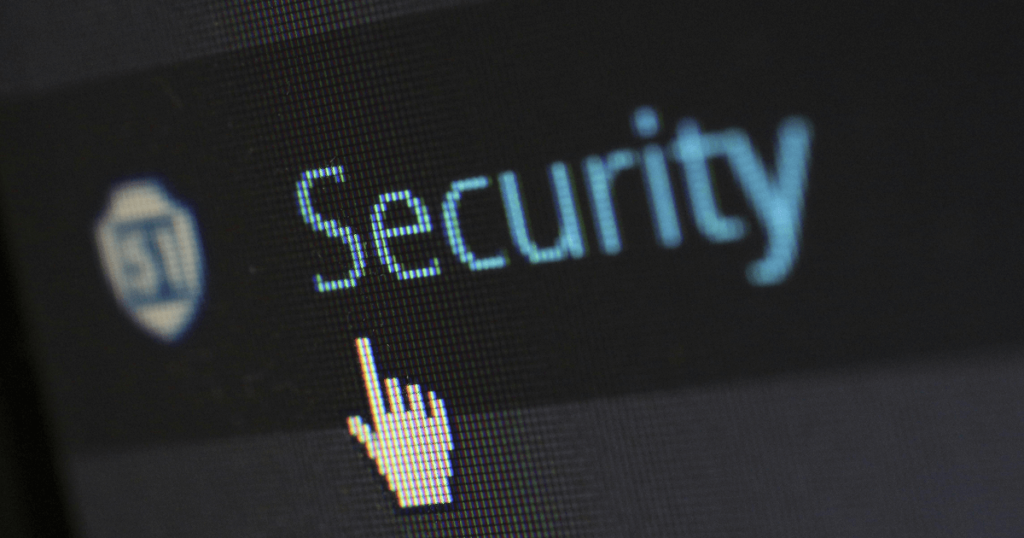Rising Inflation & Energy Pricing – The Next Critical Stage of Crisis Leadership – Author, Alex Tupman CEO

Managing change is always challenging, and the Covid pandemic altered every aspect of business almost overnight, from staff safety to supply chains, customer needs, and even the way we operated.
While most CEOs have faced challenges, difficulties, and even potential disasters at some point in their career, this was the first true crisis for many. There were a range of different responses, but we all knew that we must adapt to survive. Crisis leadership required innovation, flexibility and fast decision-making as we organised, implemented, communicated and reassured, all while constantly assessing changing data and regulations.
And just as government restrictions fully lifted, war in Ukraine loomed, leaving businesses worldwide to brace for the impact from associated inflation, energy price rises and continued supply chain disruption.
How we move on from the pandemic, evaluate our investments, and utilise the knowledge and technology we gained over the past 2 years to negotiate these new threats to business is just as critical to our future success as the decisions we made in the early days of the Covid crisis.

Optimising the shift to the cloud
If 2020-21 were the years of aggressive cloud adoption, 2022 should be the year of optimization. By shifting workloads to the cloud when the pandemic hit, CEOs rapidly reinvented their operations to enable remote working and ensure business continuity. In short, cloud saved a lot of businesses.
All signs point to cloud usage continuing to accelerate during the coming year, even among sectors that have traditionally been sluggish to adopt new technology. But it’s now time to move beyond simple migration, and instead begin to access the innovative technologies and services that will unlock the full benefit of the cloud. AI, process automation and IoT are no longer on the horizon, they’re here.
As any cloud led digital transformation continues, it may begin to create challenges surrounding security, governance and skills gaps. But it will also deliver opportunities to meet business goals, shape new models of work and deliver measurably improved outcomes and experiences.
To stay ahead of the cloud curve, it’s time to optimize the environment, streamline critical workflows, refine existing offerings, and leverage new innovations to unlock the full benefit of last year’s investment and maximize the potential future returns.

Continuing to collaborate
Collaboration software and unified communications technologies empowered teams to ride the 2020 storm. For some, productivity increased and disparate business teams were working more closely than ever. For others, the new technology simply kept the company afloat.
Expectations have changed and collaboration technology is now an essential. Our teams are able to work harder and faster when they can instantly connect, communicate, and share workflows and ideas. Customers also expect this improved agility and pace of business, which must now be maintained.
We have seen what’s possible, and as we return to the workplace in a new hybrid model, we need to leverage our collaboration technology to seamlessly replicate the same efficiency, productivity and flexibility, whether our teams are connecting from home, the office or anywhere else.
Enhancing the impact of IoT
The return to a shared workplace has been a catalyst for the deployment of IoT solutions. Reducing touchpoints, enabling contact tracing, and monitoring the office environment played a key role in enabling a faster and safer return for many.
Newly ‘smart’ office buildings feature facial recognition and temperature checks at reception desks, occupancy and proximity monitoring to facilitate social distancing, air quality sensors with reassuring real time analytics displays, and voice assistants to keep as much as possible hands free.
Now that we have started to embrace smart technology, it’s time to explore other uses that will help to offset the heavy economic toll of Covid and rising energy prices.
IoT technology can turn off lights and heat in empty areas, provide occupancy analytics and ensure the most efficient space utilization (a new headache in an uncertain world of hybrid working). It can remotely monitor critical equipment, from smart heating to printers, alerting when maintenance is required to maintain high levels of productivity.
Along with reducing and optimizing building and operational costs, IoT plays an important role in meeting sustainability targets and ESG goals. Post-Covid, 47% of organizations plan to increase their investments in IoT – it’s an essential part of any future business model.

Cultivating talent
Remotely maintaining a positive company culture was one of the biggest challenges for business leaders during the pandemic. In the absence of ‘walking the halls’, CEOs were forced to find creative ways to keep key talent happy and engaged.
We scheduled one-to-one calls to ensure staff felt supported, valued and listened to. We encouraged weekly breakfast check-ins and virtual happy hours to keep teams talking. We invested in mental health.
But this carefully cultivated remote corporate culture was only ever a short-term solution.
It’s just not possible to effectively onboard new starters and fully nurture next generation talent solely via Zoom. In a recent blog I discussed the importance of informal interactions, unplanned encounters and sitting in on last-minute meetings – it’s how we build relationships, share information, and learn our roles.
And as leaders, it’s been harder to keep a finger on the pulse of the company. Fully remote working means you need a ‘reason’ to chat to the boss. We’ve been fighting for virtual feedback and it’s time to get back in the room, and back up to speed.
But returning to the office – even partially – will mean another readjustment of company culture. It’s vital to recognise that employees’ lifestyles, routines and career goals have changed. Reconnecting will mean re-evaluating and incorporating positive changes into our corporate culture to further improve talent retention and satisfaction.

Evaluating and evolving
Leading a company through the Covid pandemic was a valuable experience in crisis management, but it was also a unique opportunity to identify opportunities and capabilities that will have a lasting impact. When the traditional ways of working were set aside, we moved faster, collaborated better, and deployed the tools we were given to their fullest potential.
And the increased flexibility and agility we discovered will serve us well as we deal with a further period of global uncertainty. Whether our staff, businesses and suppliers are directly exposed or relatively shielded from the fallout from the Ukraine conflict, we’re better positioned now to keep moving forwards.
We’re not recovering, rebuilding or restarting – we are just continuing to evolve.
Subsribe for updates and our latest research
You may be interested in
Outgrowing your MSP; businesses need a provider that scales with their growth
To stay competitive, business leaders must align with MSPs that deliver strategic value, drive innovation, and support to scale. Now firmly into 2025, it’s becoming clear what the year has in store for the IT landscape. For SMBs, the message is clear: business growth must be matched with smarter, more scalable managed services. The demand for cyber-resilient, cloud-first and AI-integrated solutions is no longer a forecast – it’s a reality already shaping business priorities. According to leading global technology market analyst firm Canalys’ MSP Trends 2025 report, the MSP model is transforming under growing pressure…
End of windows 10 support signal urgent action needed from UK organisations as cyberattacks continue to rise
Recent breaches at major UK retailers, combined with the approaching end of life of Windows 10, highlights a critical moment for IT resilience planning The recent wave of cyberattacks targeting major UK retailers has highlighted the growing security risks associated with organisations running outdated systems and applications and maintaining weak identity verification protocols. These incidents—particularly those involving Marks & Spencer and the Co-Op—have starkly exposed how vulnerable legacy infrastructure and insufficient access controls can be. In both cases, attackers successfully posed as legitimate employees and manipulated IT help desks into resetting internal passwords, ultimately gaining…
UK SMEs must fortify their cybersecurity against geopolitical risks, says Espria
A recent Sky News investigation highlighted an uptick in cyberattacks tied to the Iran conflict that are targeting businesses across multiple sectors. Speaking at the NATO Summit, Prime Minister Sir Keir Starmer urged UK businesses, regardless of size or sector, to prioritise cybersecurity and ‘take immediate steps to review and strengthen their defences.’ While the warning is timely in tone, businesses are already becoming targets of politically motivated cyberattacks, emphasising the need for heightened vigilance. “As tensions spread globally, threat actors will continue to exploit digital vulnerabilities, and neutral businesses may be caught in the…
End of windows 10 support signal urgent action needed from UK organisations as cyberattacks continue to rise
End of windows 10 support signal urgent action needed from UK organisations as cyberattacks continue to rise
Why Businesses Should Invest in ESG: Lessons learned by Espria
In today’s competitive landscape, Environmental, Social and Governance (ESG) performance is no longer just a “nice to have”—it is a critical business imperative. Companies that prioritise ESG are better positioned for long-term success, risk mitigation, and reputation enhancement. Today’s world demands more from companies than just financial performance. Customers want transparency. Employees want purpose. Investors want resilience. ESG helps businesses manage risk, seize new opportunities and build trust with the people who matter most. It is how you can stay competitive, stay responsible and stay relevant in a fast-changing world. A powerful case study of…
The Importance of Compliance and Security: Complementary Forces in Today’s Business World
In today’s rapidly evolving business landscape, compliance and security have become paramount. These two elements, often perceived as hurdles, are in fact complementary forces that drive business success and sustainability. Understanding their importance and how they work together can transform them from perceived blockers into enablers of growth and innovation. The Role of Compliance Compliance refers to adhering to laws, regulations, standards and ethical practices relevant to an industry. It ensures that a company operates within the legal framework and maintains its reputation. Compliance is not just about avoiding fines and legal issues; it is…





